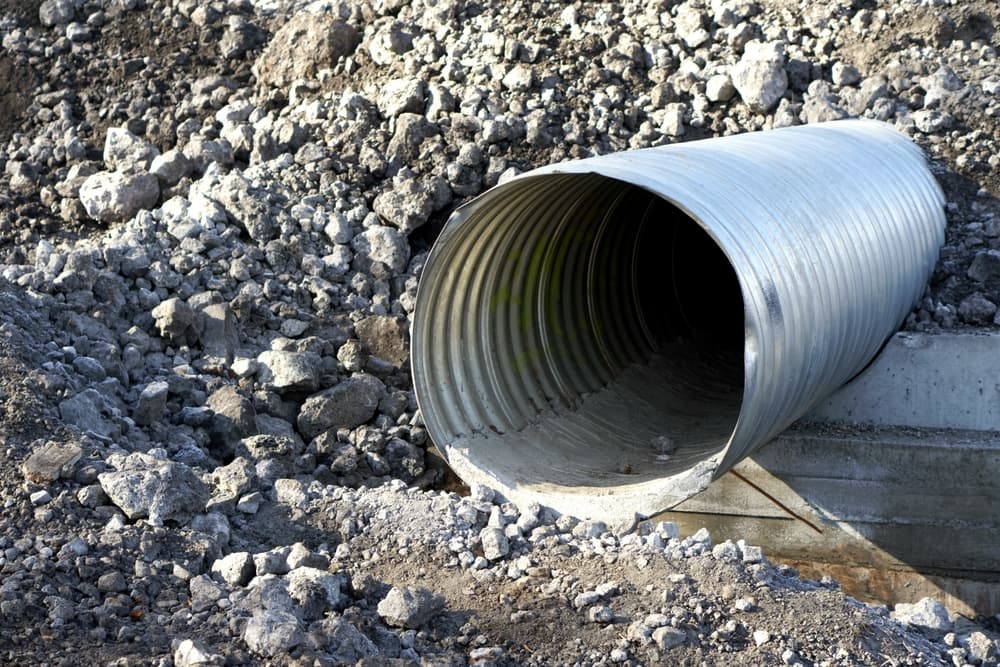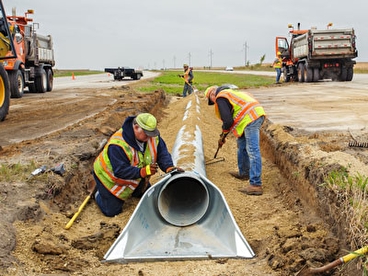Culvert Installation Facilitated: Step-by-Step Guide for Success
From choosing the appropriate culvert size to integrating correct drain actions, each step in the setup procedure plays a crucial function in the performance and long life of the culvert system. Stay tuned to discover the crucial steps and considerations that can make culvert installation a smooth and effective endeavor.
Choosing the Right Culvert Dimension
Choosing the proper culvert size is crucial for guaranteeing effective water flow and architectural stability in culvert setup projects - Pad Construction. The size of the culvert directly affects the circulation capability of water via the framework. A culvert that is too tiny can cause flooding and overflow, while one that is too big may result in lowered water velocity, possibly triggering debris build-up and obstructions
To figure out the best culvert size, factors such as the watershed area, height circulation prices, and hydraulic efficiency demand to be carefully taken into consideration. Computations based upon these specifications assist in choosing a size that can properly take care of the predicted water quantity while decreasing the danger of blockages and structural failure.
It is important to seek advice from engineering guidelines and standards to guarantee that the selected culvert size meets the project needs and local laws (Pad Construction). By choosing the appropriate culvert dimension, project supervisors can enhance water circulation, protect against prospective concerns, and improve the overall effectiveness and durability of the culvert installment
Preparing the Installation Site
Effective culvert setup requires precise preparation of the installment site to ensure optimal architectural assistance and functionality. Before starting the installation procedure, it is crucial to get rid of the site of any debris, plants, or obstructions that could hinder the culvert's positioning. Making certain a degree structure is essential for the appropriate placement and stability of the culvert. This may involve grading the site to produce a smooth, also surface area that can appropriately sustain the weight of the culvert and any type of awaited loads. In addition, appropriate compaction of the soil underneath the culvert is needed to stop clearing up or changing over time.
Moreover, it is necessary to take into consideration elements such as dirt make-up, groundwater levels, and ecological effects when preparing the installation website. Performing a comprehensive site evaluation can help determine any possible obstacles or risks that may influence the culvert's performance. By taking the time to prepare the installation site appropriately, you can assist assure a successful culvert installment that fulfills structural requirements and makes certain long-lasting functionality.
Putting the Culvert Correctly

The quality at which the culvert is placed is crucial for preserving a proper slope for water flow. Furthermore, the culvert must be oriented properly to make certain that the inlet and electrical outlet are in the proper areas. Pad Construction.
Backfilling and Compacting the Dirt
Appropriate backfilling Underbrush Clearing and compaction of the soil around the culvert is essential to guarantee security and avoid potential issues in the future. As soon as the culvert is correctly put, the next essential step is to backfill the area around it with suitable product.
Compaction aids in decreasing the chances of negotiation and makes sure uniform support around the culvert. It is important to small the soil equally on all sides of the culvert to keep its architectural integrity.
Proper backfilling and compaction not only provide security to the culvert however additionally assist in avoiding dirt erosion and keeping the durability of the culvert system.
Ensuring Correct Drainage Assimilation
Incorporating effective drainage options plays a vital duty in the total performance and durability of culvert installations. Proper drain combination is essential for managing water flow, stopping disintegration, and making sure the structural honesty of the culvert system. To attain this, it is crucial to make a comprehensive water drainage plan that considers aspects such as the volume of water anticipated, the topography of the area, and the type of soil present.

In addition, including features like erosion control measures, such as riprap or vegetation, can even more boost the efficiency of the drainage system. By meticulously planning and implementing these water drainage solutions, culvert setups can operate successfully and stand up to the examination of time.
Final Thought
To conclude, proper culvert installation is critical for maintaining efficient drainage systems. By selecting the best culvert dimension, preparing the installation website, putting the culvert properly, backfilling and condensing the dirt, and making certain proper drainage combination, success can be accomplished. Following these steps will aid guarantee the long life and effectiveness of the culvert, inevitably adding to the total success of the drain system.